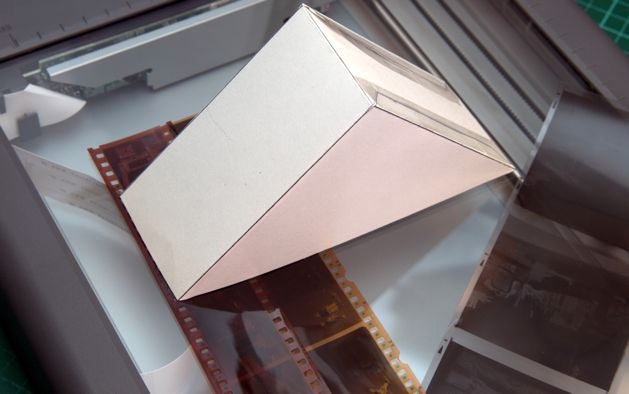How to scan negatives using a standard scanner
Everyday flatbed scanners don't work to scan slides and negatives because they need to be backlit — but with just a bit of cardboard, you can redirect some light, and make it happen.

If you have old negatives or slides that you want to preserve digitally, you probably already know that just throwing them on your flatbed scanner won’t work. You need a bright light source that comes from behind the negative and the multi-function printer/scanner you use to print coupons is seriously lacking in that department. However, if you hack up a bit of silver cardboard and place it strategically over the film strip you want to scan, you can get your film negatives onto your computer.
The technique requires thick silver card stock, over which you print this pattern, before cutting and taping it into the shape you see in the photo above. You position it above the slide you want to save, and during the scanning process, the light from the flatbed bounces up into the wedge, and reflects back down behind the slide, giving you a basic backlight.

Once the slide or negative is scanned at an appropriate resolution, you can invert the colors, and then perform other corrections in order to remove dust or color errors.
The best part? You can tweak the design to fit whatever size film you have lying around. Even if you have a dedicated flatbed film scanner, it can still be difficult to scan negatives bigger than a standard roll of 120 medium format film.
While the results might not be quite the quality of a dedicated scanner, it’s a much cheaper option using materials you can easily and cheaply get, and a piece of hardware there’s a pretty good chance you already have lying around the house.